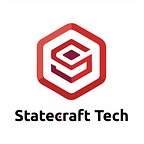Norway to use blockchain to boost seafood sustainability
【 Published by foodandfarmingtechnology | Editor: CHRISTINE HORTON】
Norwegian seafood producers to use IBM blockchain technology for greater transparency and sustainability in seafood production
IBM and Sjømatbedriftene, the Norwegian Seafood Association, have teamed with IT provider Atea on a new cross-industry collaboration to use blockchain technology to share supply chain data throughout Norway’s seafood industry.
Their aim is to provide safer, better seafood to consumers worldwide, eliminate waste and combat mislabeling of supplies.
Espen Braathe of IBM’s Food Trust Europe Executive tells Food & Farming Technology that farmed fish is facing a crisis of confidence.
“Despite the many benefits of maintaining a sustainable food source, consumers are still wary of farmed-raised seafood thanks in part to reports of poor regulation and product mislabeling casting doubt on quality and authenticity”.
“Norway is known for stricter farming guidelines and high-quality seafood, but many still fear the piece of salmon they bought is actually a piece of trout farmed somewhere else and mislabeled somewhere along the supply chain. That’s part of why Atea, and Sjømatbedriftene [have]teamed up with IBM Blockchain to enhance traceability of their seafood from farm to supermarkets around the world.”
Tackling fish fraud
IBM says blockchain also helps combat the problem of fraud. Fish is one of the most mislabeled foods — a study by marine conservation nonprofit Oceana found that 20 percent of the fish it tested in the U.S. was mislabeled.
“Much of this mislabeling is concentrated on the most popular types of fish, from salmon to seabass to scallops,” said Braathe. “This kind of mislabeling usually happens in the middle of the supply chain, where unscrupulous distributors dilute high-quality fish with lower quality product. This mislabeling creates a massive issue of mistrust amongst consumers who want to be sure that they are receiving fish of the quality that they pay for.”
Using IBM’s Blockchain Transparent Supply, an offering from IBM using the underlying technology behind Food Trust, the blockchain network will automatically track critical information about fish farmers and the fish they produce, using internet-of-things sensors and production data.
This includes where they are located, when and what they were fed, when the fish were born, when they were harvested and what was done to preserve them for transport. This tamper-proof evidence can be passed on to food processors, distributors, grocers, and eventually to the end consumer.
“A revolution for the seafood industry”
Norway exported more than 2.7 million tons of seafood in 2019. So far, several Norwegian seafood companies have joined the network to share information like catch time and location, or, if the fish was farmed, what feed was used and where the farms were located. One firm, Kvarøy Arctic, a provider of naturally sea farmed salmon, will soon begin delivering blockchain-traced salmon to leading retailers like Whole Foods in the United States and Canada. Meanwhile, fish feed provider BioMar has joined the network allowing Nordic seafood companies to provide insight into the origin and quality of seafood as well as the quality of feed the fish eat every day.
Robert Eriksson, CEO, Sjømatbedriftene, said the collaboration “cannot be considered as any less than a revolution for the Norwegian seafood industry.”
“This revolution will enable Norwegian seafood producers to take control over the entire value chain, reduce food waste, contribute to increased consumer awareness and to promote an even more sustainable and environmentally friendly seafood production in Norway.”
Seventy-one percent of consumers says that traceability is important to them and they are willing to pay a premium for brands that provide it, according to an IBM study.
IBM says the new network will allow customers in-store to know the fjord where the fish is from, when it was fished, the feed it has eaten and whether the facility uses sustainable methods. Customs agencies will be able to access data more easily about volume and location of shipments to expedite customs clearance. It adds that by sharing all this information across the supply chain, seafood producers who invest in quality will also be able to charge a premium, increasing pay for the people who catch the fish.
■ Source: foodandfarmingtechnology
■ Note: Please specify the source or references of the article for reproduced.
■ Solemn declaration: We reproduced articles and news for purpose of sharing information. Copyright belongs to the original author. If there is any infringement/error, please contact us as soon as possible, modify or delete action will be implemented immediately. Content analysis is for information purposes only and does not constitute any investment advice.
■ View Disclaimer: the views, thoughts, and opinions expressed in the text belong solely to the author, and not necessarily to the author’s employer, organization, committee or other group or individual.
■ Please visit our site: Statecraft for more information and the latest news update.
■ Follow Us 👉 Instagram| Facebook | Telegram | Twitter | Youtube | Linkedin | Line@
■ Business Contact: blockchain@statecraft.ltd
